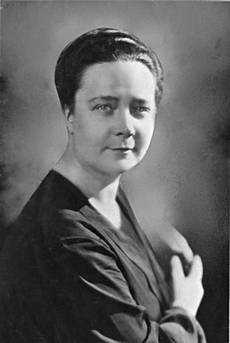
 AST WEEK I had the pleasure of rereading Dorothy Sayer’s The Lost Tools of Learning, which is one of the most lucid and well written overviews of the Classical Trivium (part of the larger liberal, or free, arts) I have ever come across. For readers unfamiliar with it, the Classical Trivium consists of three stages of study (which happen to align with the natural learning stages of children), namely the grammar, logic (or dialectic) and rhetoric stages, which are necessary to be thoroughly grounded in before one is able to move to the study of “subjects,” especially the Classical Quadrivium. Sayer’s argument is that while young people today learn all kinds of subjects (and can therefore fill cogs in society’s wheels), they never arrive at Truth. Perhaps this only goes to show my ignorance, but after reading the essay, it finally hit me that the stages of music learning dovetail nicely with the Classical Trivium. By way of explanation I will give a brief description of each “tool,” or stage, of the Classical Trivium.
AST WEEK I had the pleasure of rereading Dorothy Sayer’s The Lost Tools of Learning, which is one of the most lucid and well written overviews of the Classical Trivium (part of the larger liberal, or free, arts) I have ever come across. For readers unfamiliar with it, the Classical Trivium consists of three stages of study (which happen to align with the natural learning stages of children), namely the grammar, logic (or dialectic) and rhetoric stages, which are necessary to be thoroughly grounded in before one is able to move to the study of “subjects,” especially the Classical Quadrivium. Sayer’s argument is that while young people today learn all kinds of subjects (and can therefore fill cogs in society’s wheels), they never arrive at Truth. Perhaps this only goes to show my ignorance, but after reading the essay, it finally hit me that the stages of music learning dovetail nicely with the Classical Trivium. By way of explanation I will give a brief description of each “tool,” or stage, of the Classical Trivium.
In the first stage, Classical Grammar (up to somewhere around the 4th grade), the child engages the mechanics of language, specifically learning an inflected language such as Latin or Greek. Only by learning the structure of language in general can one ever hope to understand and communicate effectively in any language. Children in the Grammar stage also excel in the use of their faculties of observation and memory.
In the second stage, Classical Logic, or Dialectic (somewhere around the grades of 5 and 6), the child learns the “logical construction of speech,” focusing especially on “the beauty and economy of a fine demonstration or a well turned argument.”
During the final stage, Classical Rhetoric (beginning around the 7th or 8th grade), the student learns how to communicate effectively himself. Only when he is able to do this should he be allowed to dive into the specialized learning of subjects, by which time he will have learned that all knowledge and Truth are one (or perhaps we could write One).
Now to the question of how this relates to the learning of music. I have found that at a young age, which we will term the Grammar Stage of Music, children love to sing all kinds of simple, but well constructed folk songs, hymns, chants, etc. Most of them can easily be trained to sing in the head voice and they find joy in learning about notes, rhythms, solfege and even singing simple two and three part rounds. The Kodaly method of teaching music works extremely well during this stage. Around the 4th grade children transition to what I will call the Dialectic Stage of Music, at which time they are ready to begin singing simple motets and anthems and have no difficulty analyzing this music, or even the works of the great composers. Children should also begin improvising their own short melodies and rhythms at this time. By the end of this stage they are capable of singing much of the intermediate four part repertoire (where children sing the upper two parts) of the Common Practice Period. When they enter junior high, which I will term the Rhetorical Stage of Music, they should be tackling the more difficult four to eight part music (again, where the children sing the upper parts) and delving into serious music composition. If you don’t believe this can be done, just look to the choir schools. I witnessed it myself at the Madeleine Choir School. Of course it is true that not every student, or even the majority of students, will be composing serious music by the age of 14 or even deciding to go into the field of church music. On the other hand, we will never inspire a new generation of great Catholic musicians, so sorely needed at this time, if we don’t open their eyes to the “Lost Tools of Learning Music” and point them to the One to Whose praises we hope to sing for ever in the Heavenly Jerusalem.

